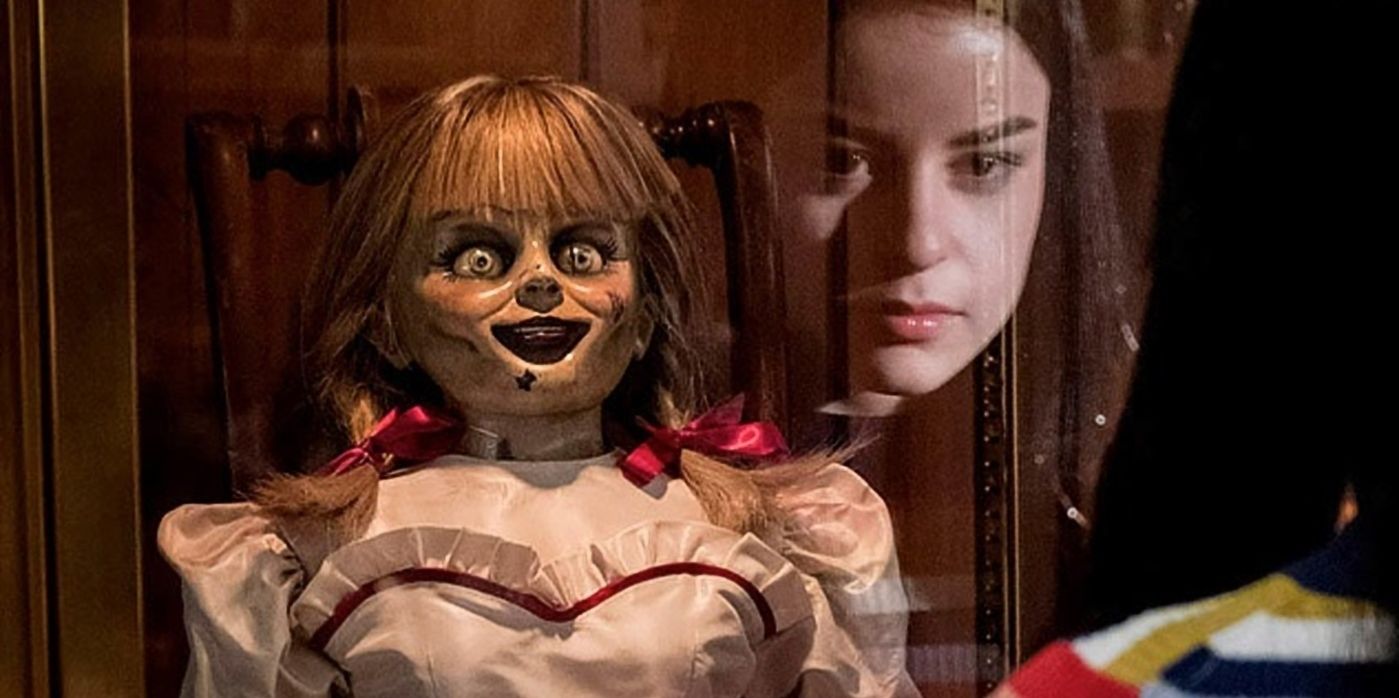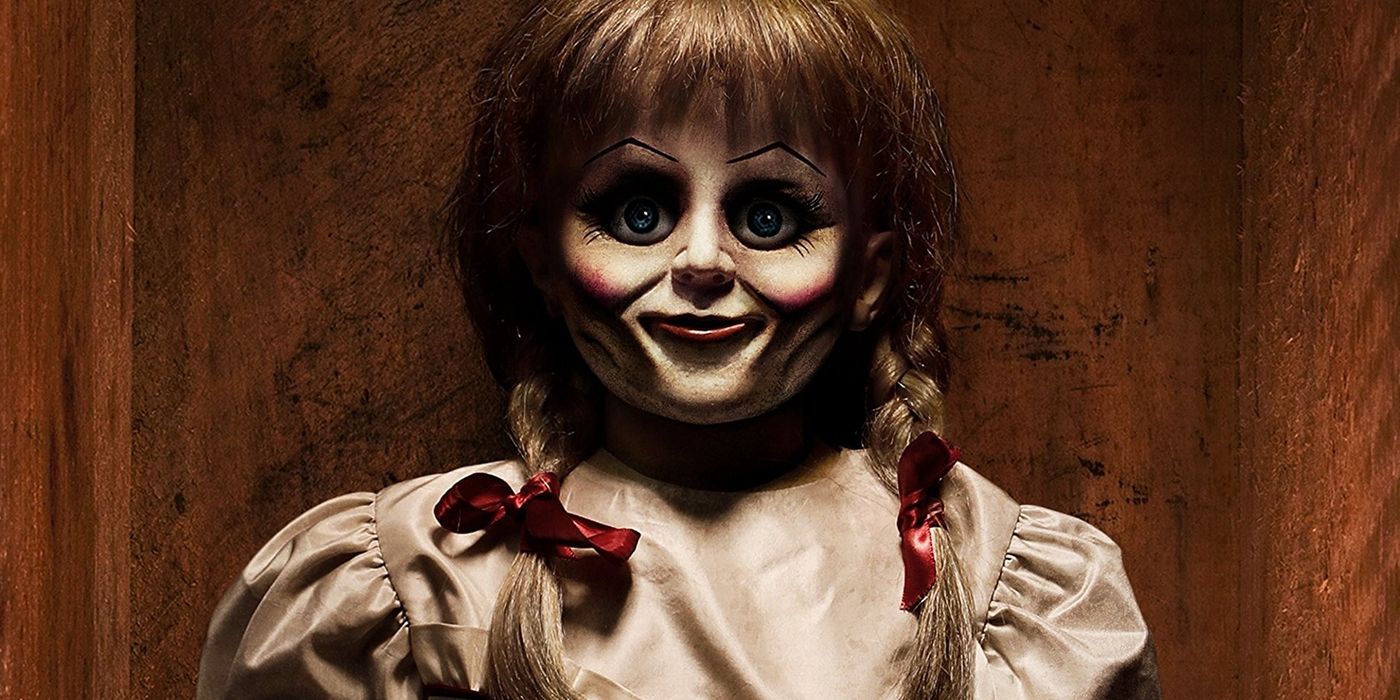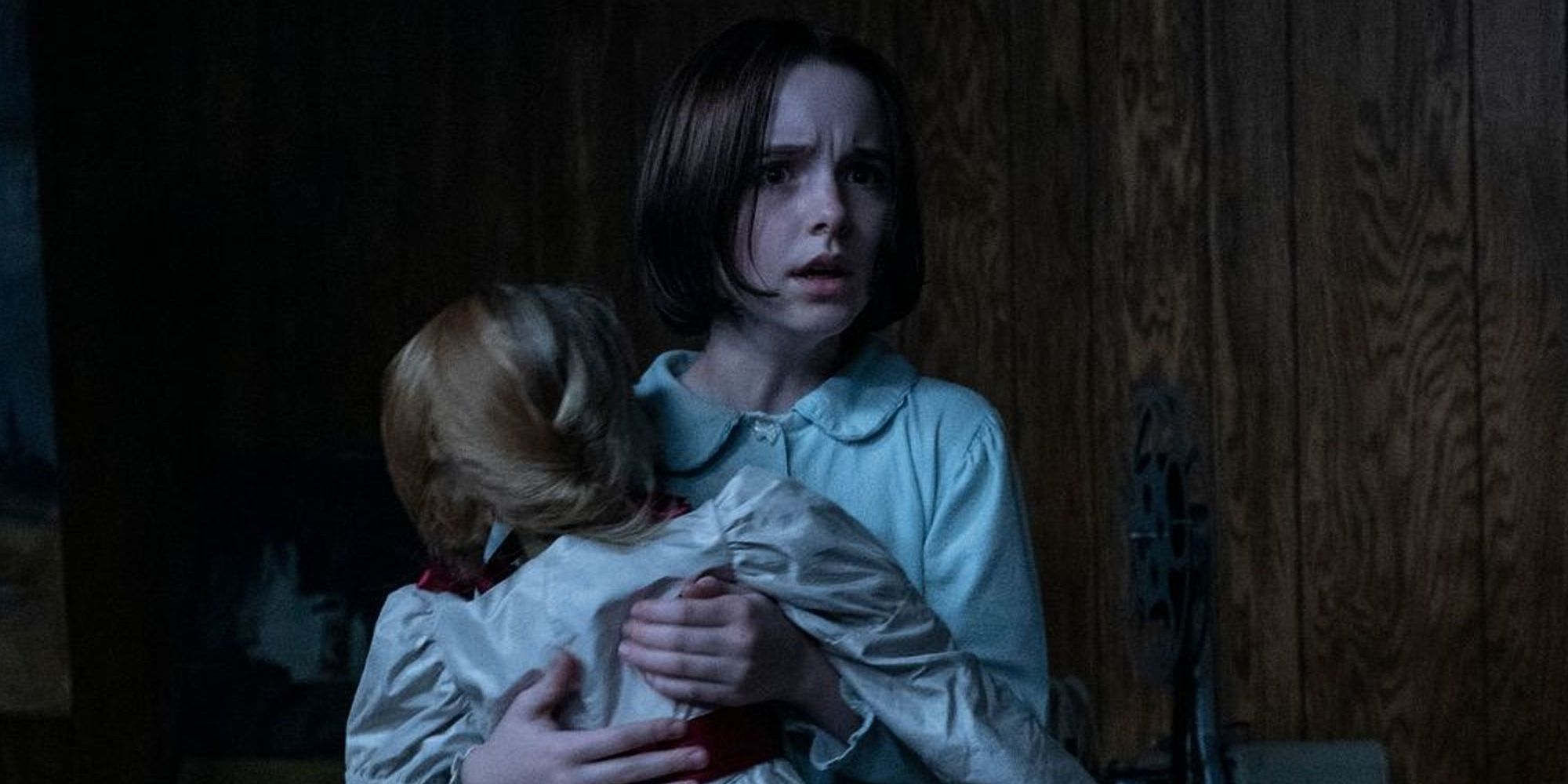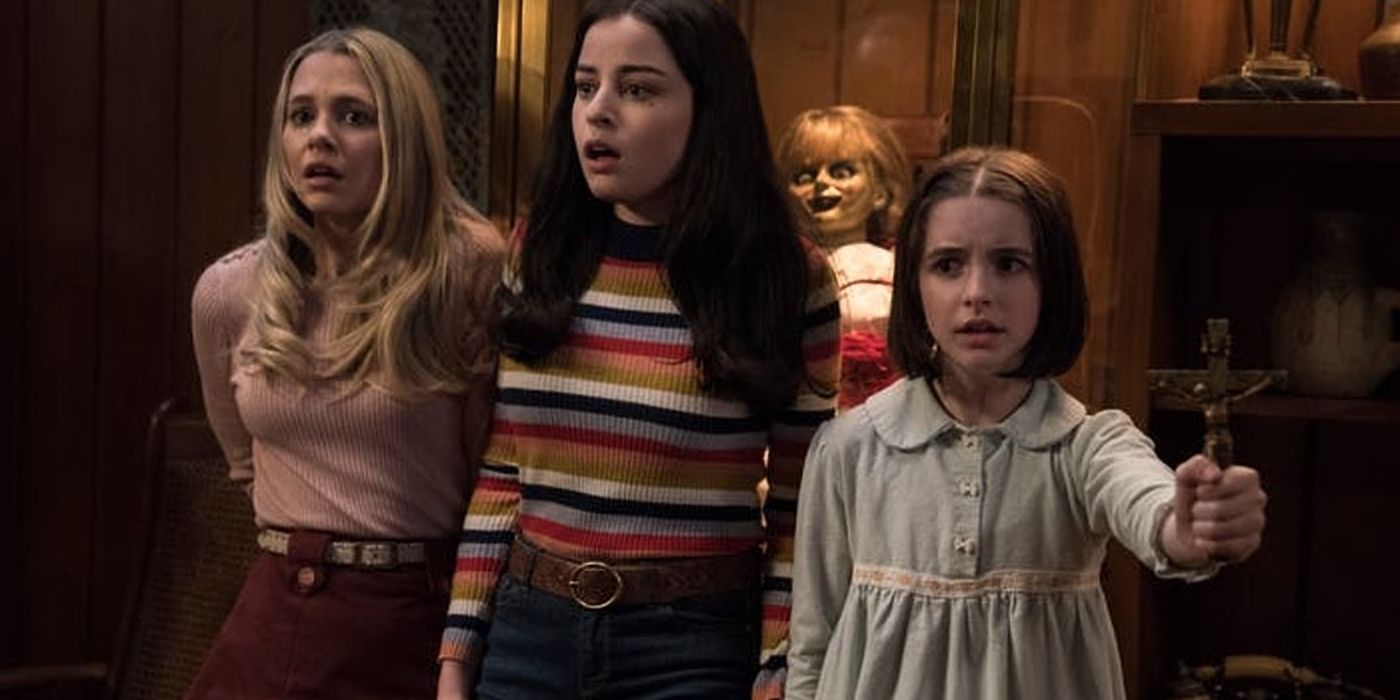WARNING: The following contains spoilers for Annabelle Comes Home, in theaters now.
Annabelle Comes Home is less of a cinematic masterpiece and more of a well-constructed haunted house, but that works to the benefit of the film, which presents a light and frightening horror narrative. The seventh (and arguably best) entry in the Conjuring Universe of films dispenses with the more predictable beats that previous films in the franchise overplayed. This gives the film time to really play with the various ghouls and ghosts that it introduces. This sheer variety also gives director Gary Dauberman the chance to play with a number of different styles of scary, ranging from the mesmerizing to the sudden.
The best way Dauberman tweaks the formula is in how he plays with the film's jump scares. The horror cliche has been overplayed in recent years, but Annabelle Comes Home manages to resist the urge to use the jump scare to the point of exhaustion. Instead, the film even uses the jump scare setup to create tension throughout the film.
The Jump-Scare Pump Fake
Multiple times throughout the film, Dauberman puts together all the ingredients for a jump scare. These sequences have the characters moving around a scene, unaware of the things that are waiting to jump out at them. The film sets up the tension by putting the threats so close to the heroes, then doesn't do anything with it.
Other horror films have used this moment of calm to push the jump scare, trying to make it more sudden. But Dauberman shows restraint, usually only pulling back from the jump scare to reveal whatever is lying in wait. It forces the viewer to contend with what's coming, elevating the tension instead of relieving it.
Moments like the Warrens parked outside the cemetery with the Annabelle doll really reinforce this approach. Although the jump scare is set up, nothing comes directly of it. Instead, Dauberman uses the moment of calm to reveal something even scarier is moving in the background of the scene, forcing audiences to wonder when the jump scare is actually going to happen.
This makes it so that even something as pedestrian as a box closing suddenly can make the whole audience jump. This ratchets up the tension further, letting the eventual scare moment hit like a sack of bricks.
Atmosphere Over Scares
This all plays into one of the underlying strengths of Annabelle Comes Home: atmosphere. The various ghouls that threaten the girls all utilize their control of the world to target them.
The Ferryman, especially, is able to fill any room with darkness. This can lure people (like Mary Ellen) further into its grasp. These moments increase the tension of the film each time instead of relying on loud jump scares that get exhausting over time. This slow burn to the actual scares lets the audience get as absorbed in the moment as Mary Ellen. It makes the eventual horror moment all the more effective.
It also tricks the viewer, raising their anxiety over the fates of the character for longer periods. This means the scares land with more power, and are scarier. It also allows moments to naturally build, such as the Bride moving past windows, through mirrors and into the room next door.
It gives the Ferryman time to lure Mary Ellen further into the dark, and surprise her (and the audience) by disappearing as her light reaches his face. It means the board game Feely Meely doesn't actually have to do anything the first time it's used. This means when it springs to life suddenly in the climax, it's significantly more frightening. For a horror movie, that's the mission.
How To Hold Tension
Throughout Annabelle Comes Home, the ghosts often end up being considerably slower burns than most of the other demons featured in the Conjuring franchise. Many of the threats that have appeared in these films have relied heavily on the jump scares for effect. This has led to a certain level of predictability.
Annabelle Comes Home occasionally falls into that trend, but luckily not nearly enough. Instead, the film figures out how to hold onto tension for extended periods of time. This gives the narrative time to build to each scare. It helps the pacing of the film and keeps the movie consistently frightening, even when it moves into more cliche story beats.
Annabelle Comes Home may not be the most revolutionary film ever created, but it's also a very effective horror film. The ways the scares are set up help the terrifying moments really land, all to great effect. It's what makes this film stand out from the rest of the series.
Written and directed by Gary Dauberman, Annabelle Comes Home stars Patrick Wilson, Vera Farmiga, Mckenna Grace, Madison Iseman and Katie Sarife.




